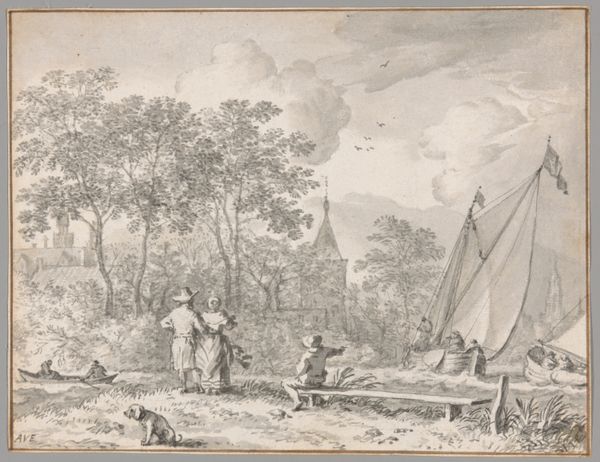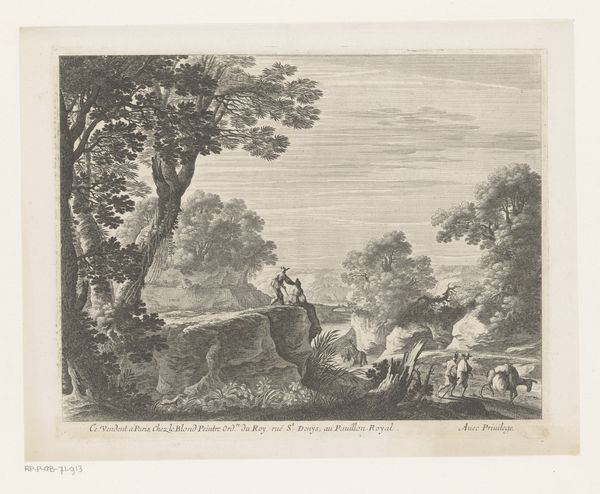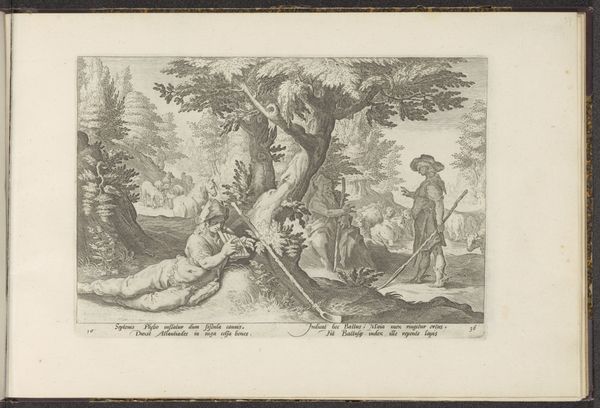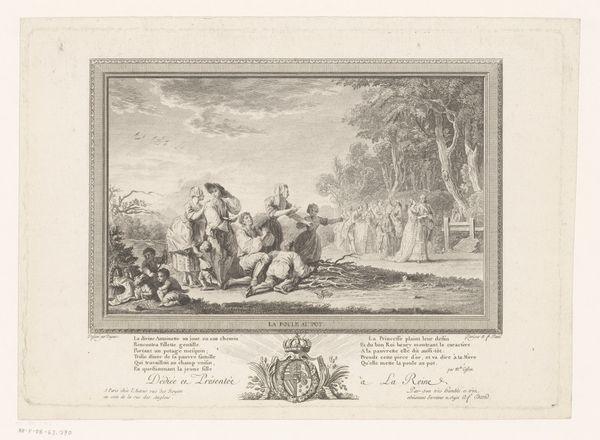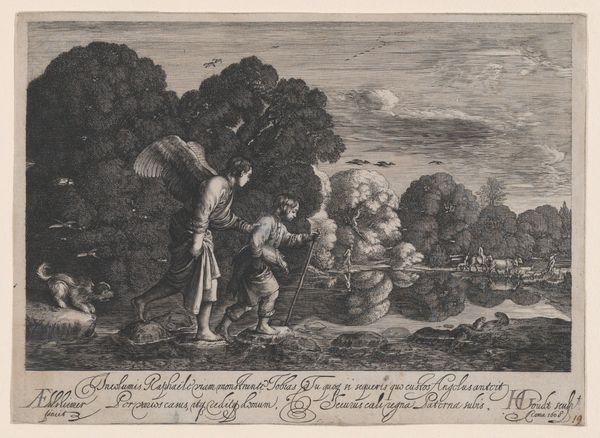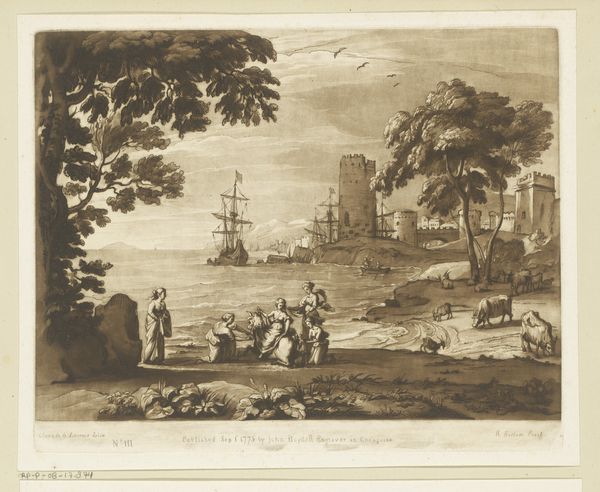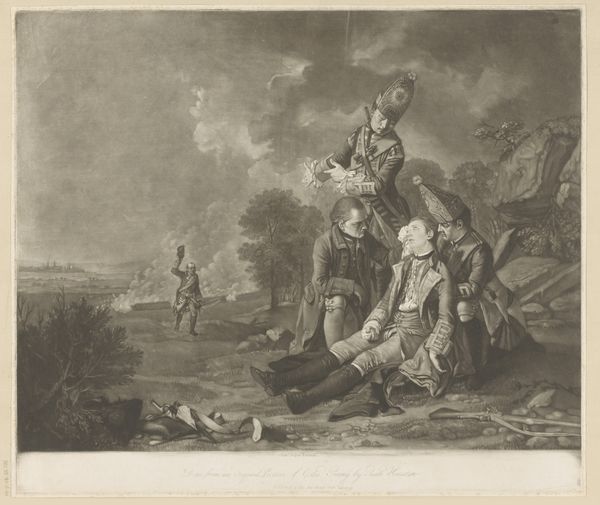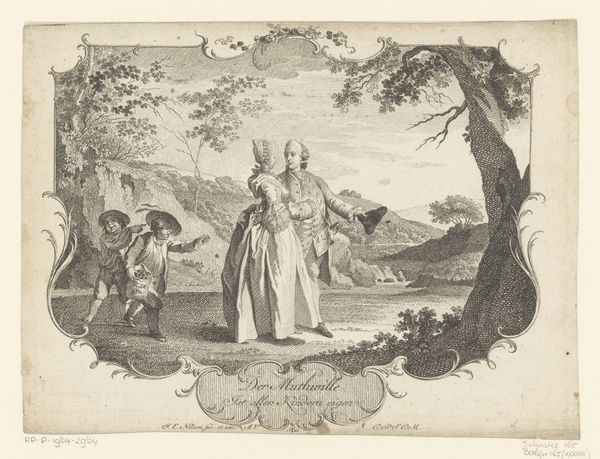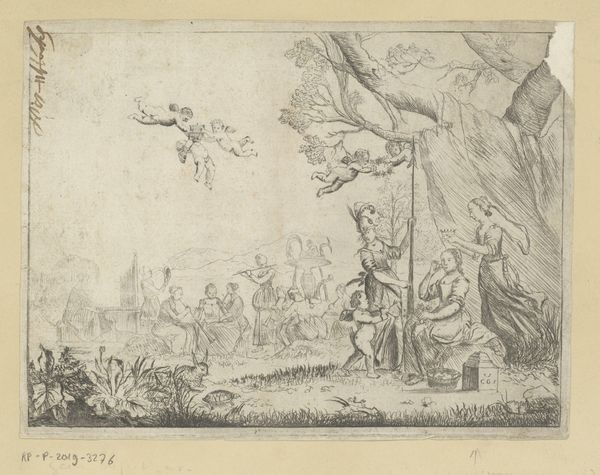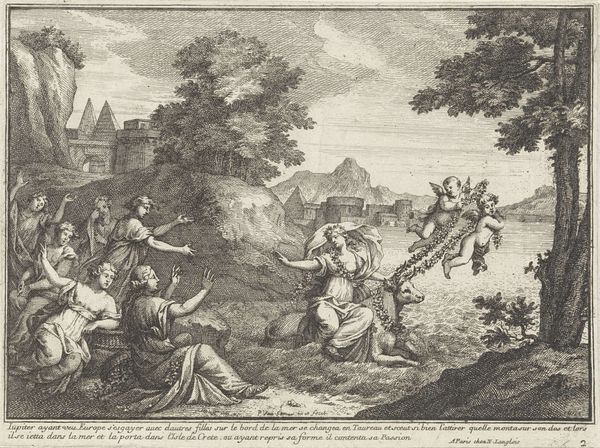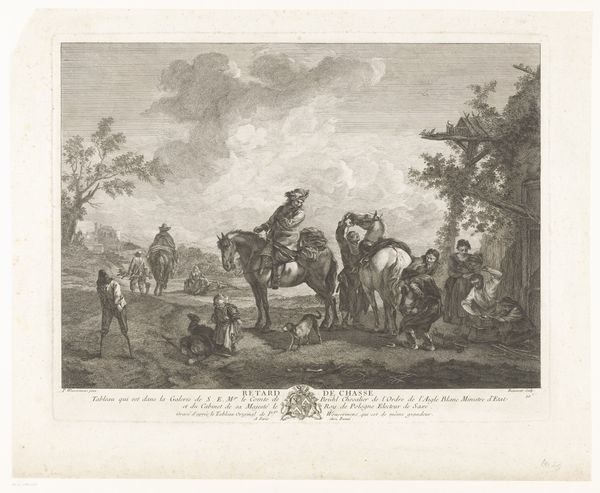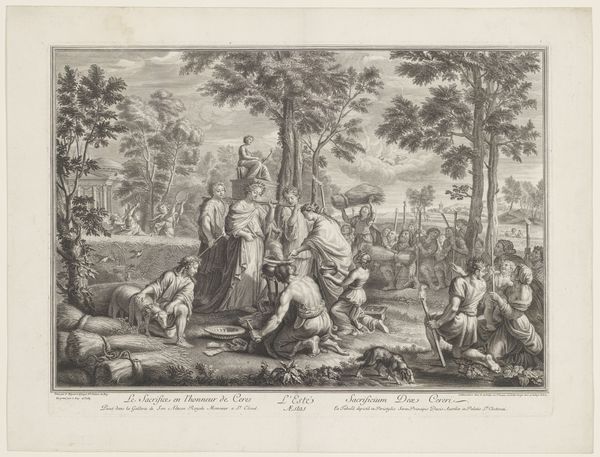
Dimensions: height 192 mm, width 239 mm
Copyright: Rijks Museum: Open Domain
Editor: We’re looking at "Keeshond en Oranjeklanten op de weegschaal, 1787," a drawing in pen, coloured pencil, and watercolor by an anonymous artist. It feels... chaotic but with a clear division. What do you see in this piece? Curator: Chaos indeed, but a purposeful, playful chaos! Imagine the artist with a twinkle in their eye, observing the political turmoil of the time. It’s an allegory, you see – the Orangists, symbolized by the people on the seesaw and the loyal Keeshond dog, are being weighed against… well, everything else. A bit unbalanced, wouldn't you say? I almost want to climb inside and right that imbalance myself. The colours, so vibrant, mask the rather pointed political message. It is rococo, after all. A jab dressed up in finery! Editor: That’s a good point; I didn’t consider the colours against the message! What about the women gathered around what appears to be a memorial? Is there political messaging at work there as well? Curator: Ah, good eye! The memorial represents the past glories of the House of Orange. Notice how they cling to it, trying to invoke a bygone era? It speaks volumes about the anxieties and hopes swirling around at the time. You could almost hear the hushed whispers of revolution carried on the wind as the artist sketched this piece! What strikes me is this: did anyone understand just how pointed the artist was being? Editor: Maybe they just wanted to depict something nice that makes people think, without giving away which "side" they might support! I’ve never thought about political tensions making their way into art quite so overtly before! It definitely reframes my whole perspective of art's power as communication. Curator: Exactly! It makes you wonder what hidden narratives lurk beneath the surface of other artworks, doesn’t it? What about today; I wonder what messages or images will be excavated about this era in a hundred, two hundred years? We must ask the big questions, always.
Comments
No comments
Be the first to comment and join the conversation on the ultimate creative platform.
